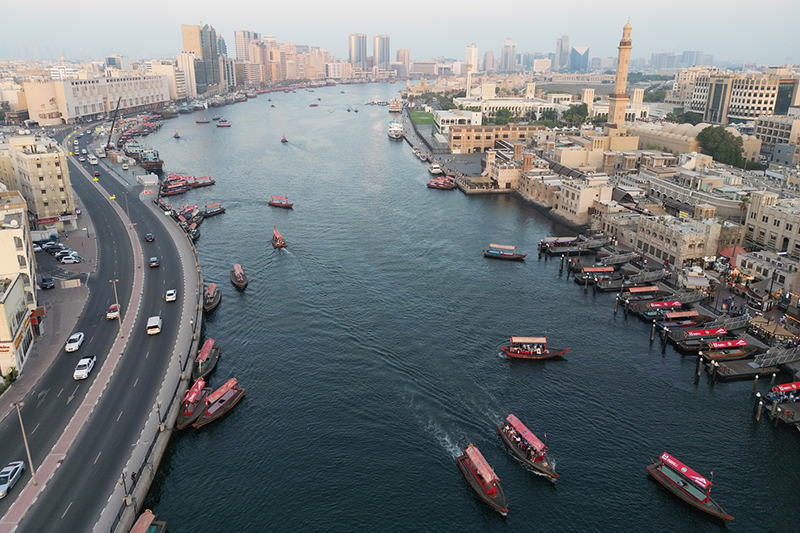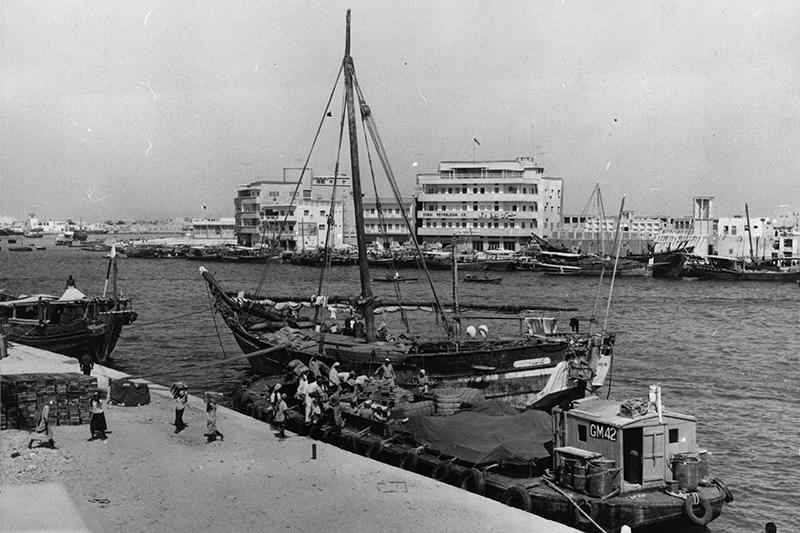Dubai Creek to undergo multi-million dirham restoration
“The Creek is the very heart and soul of Dubai – its raison d’être,” – His Highness Sheikh Mohammed bin Rashid Al Maktoum, Vice President of the UAE and Ruler of Dubai …
The Creek has played a major role in transforming Dubai into the megacity it is today by initiating Dubai’s trade interactions with the world over a century ago. While it may not be the city’s most important trading port anymore, it is worth protecting, which is why Dubai Municipality has launched a multi-million dirham rehabilitation project to rebuild the Creek.
The Dhs112 million project is set to ‘enhance the effectiveness of the creek’s retaining wall by upgrading the docks, reconstructing sections that have been damaged and dilapidated over the past 50 years, and preventing potential flooding during harsh weather conditions.’ The enhancements aim to minimize disruptions to commercial traffic caused by flooding or bad weather.

The project is set to take 14 months to complete and will be completed in two phases. The initial phase will see the restoration of the 2.1km stretch along the Deira side of the Creek, further divided into phases to ensure uninterrupted docking traffic. This will include the replacement of damaged sections of the concrete wall.
The second phase will cover a 2.3km length on the Bur Dubai side.
A history lesson…

Above: Dubai Creek, 1967
According to UNESCO, the earliest known description of Dubai Creek, back then known as Khor Dubai, is found in an 1822 report by a British Royal Navy officer.
The creek’s economic significance can be traced back to 1902, when HH Sheikh Maktoum bin Hasher – the then ruler of Dubai – abolished all custom duties on imports, essentially creating a free trade zone. Dubai became a major trading hub, with much of the activity centred around the Creek.
The Creek was also the starting and finishing point for pearling expeditions, which once formed the backbone of the economy. Thanks to its warm, shallow waters, there was a thriving marine life which meant fishing was yet another main industry. Wooden dhows were also often built right on the shores of the creek.
The Creek historically divided the city into two sections, Deira and Bur Dubai, coming to an end at the Ras Al Khor Wildlife Sanctuary. However, when the Dubai Water Canal opened in 2016, it extended to the Arabian Gulf, effectively turning part of the city into an island.
Interesting fact: From 1935 to 1947 Dubai Creek served as Dubai’s Airport. Before Dubai got its airport, seaplanes used to land on the Creek. The first plane to touch down in the UAE landed on the creek in 1937, carrying passengers from Southhampton to Karachi.
Images: Getty Images and Dubai Media Office
